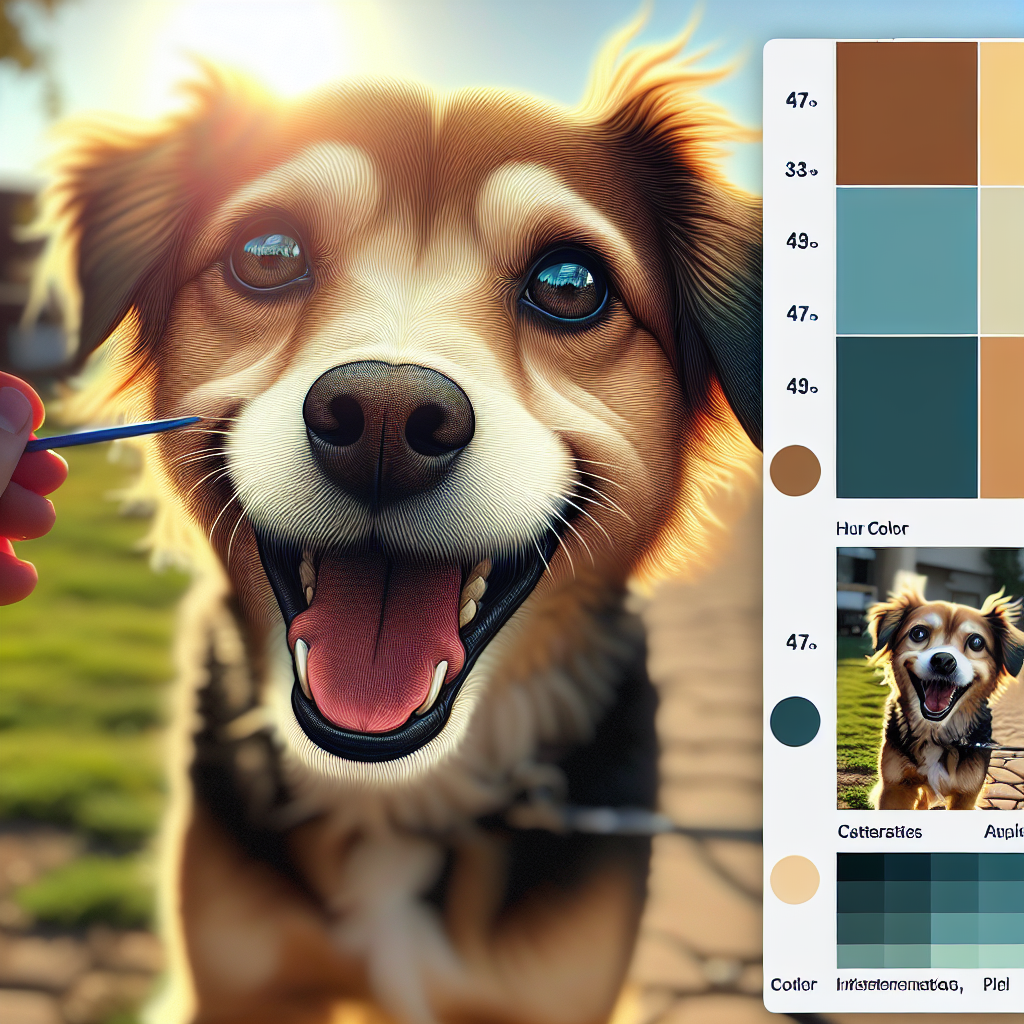Introduction: The Flea Fiasco in Your Litter Box

Oh, the joys of pet ownership. You think you’ve got it all covered—then bam, you find yourself waging an unexpected war in your cat’s litter box. Flea infestation in the litter box—who knew, right? Those tiny pests can turn your kitty’s sacred space into their own little flea haven. You’ve probably seen your feline friend scratching more than usual. You might even have noticed some tiny, unwanted guests hopping around. It’s like they’re throwing a flea party in there, and you’re not invited.
Fleas are like that friend who overstays their welcome. They show up unannounced and just won’t leave. But before you start throwing everything out, let’s take a moment. Sit down, grab a cup of something warm, and let’s dive into this flea fiasco.
Understanding the Flea Life Cycle
Now, if you’re gonna tackle this problem, you need to know your enemy. Understand the flea life cycle—it’s not just a biology lesson, it’s your battle plan. Fleas are relentless. They start as eggs, hatch into larvae, then pupae, and finally, they become adults. It’s like watching a horror movie unfold in your cat’s litter box.
Adult fleas are the main culprits, but their eggs can be just as troublesome. They’re like little ticking time bombs just waiting to hatch. And guess what? They love warm, humid places—like your cat’s litter box. Oh, joy.
But here’s the kicker: those pesky fleas can jump like tiny acrobats. They don’t just stick to the litter box. No, they’ll hitch a ride on your kitty and spread throughout your home. It’s like a flea circus, and everyone’s invited. Knowing this, you can start planning your counterattack.
Signs Your Cat’s Litter Box Might Be a Flea Haven
So, how do you know if your litter box is a flea haven? Well, besides the constant scratching, there are a few telltale signs of fleas in the litter box. You might notice tiny black specks—flea dirt—on the litter or around the box. They look like pepper flakes, but they’re far from a seasoning.
Then there’s the jumping. Fleas are like tiny, creepy athletes. If you see little jumping spots, it’s not a magic trick. It’s a sign you’ve got company. And not the good kind. Also, if you notice your cat being more restless than usual, it could be because they’re sharing their space with unwanted guests.
It’s time to play detective. Grab a flashlight, and inspect the litter box. Look for movement, those black specks, anything that seems out of the ordinary.
Natural Remedies to Consider
Alright, let’s talk solutions. You’re not just gonna sit back and let these fleas run the show, right? There are natural flea remedies for cats that you can try. We’re talking about getting rid of fleas naturally—no harsh chemicals, no breaking the bank.
First up, diatomaceous earth. This stuff is like kryptonite for fleas. Sprinkle it around the litter box and watch it work its magic. It cuts through the fleas’ exoskeletons—sounds harsh, but hey, they started it.
Then there’s vinegar. A homemade flea solution that’s as easy as pie. Mix equal parts of water and apple cider vinegar in a spray bottle. Spritz it around the litter area. Fleas hate the smell. It’s like their own personal nightmare.
And don’t forget about good old-fashioned cleaning. Regular cleaning of the litter box and surrounding areas can help keep those pesky fleas at bay. Vacuuming, sweeping, wiping down surfaces—simple actions, but they make a big difference.
The Importance of Consistent Flea Treatment
Now, here’s the thing: consistency is key. You can’t just do this once and expect the fleas to pack up and leave. Consistent flea treatment for cats is crucial. Think of it like a workout routine. You don’t get fit by hitting the gym once. Same goes for flea control.
Regularly check your cat for fleas, keep up with the natural treatments, and stay vigilant. It’s like being in a long-term relationship with flea treatment. You’ve gotta put in the work.
And hey, your cat will thank you. There’s nothing like a flea-free litter box to make their day. Plus, you’ll have peace of mind knowing you’ve taken action.
So there you have it, folks. A no-nonsense guide to tackling the flea infestation in the litter box. It’s not glamorous, but it’s real. And you’ve got this. Thanks for sticking around, and good luck out there.
Get Your Hands Dirty: Clean That Litter Box
So, you wanna get rid of fleas in a litter box, huh? You’ve got some work ahead, my friend. Getting your hands dirty is the name of the game. It’s not glamorous, but it’s necessary. First things first, get that litter box out of its usual spot. You need a clear view of what you’re dealing with. The goal is to clean litter box fleas out of existence. Grab some gloves and a mask—you’re not fighting aliens, but it’s close enough.
Dump the litter. All of it. I mean, every last grain. Your nose might hate you, but your cat will thank you later. Use a pet-safe disinfectant to scrub the inside. Don’t skimp on the elbow grease. Fleas love to hide in nooks and crannies. Rinse it thoroughly and let it dry in the sun. Sunlight can be your ally here. It zaps moisture and, with it, the will of any flea that dared to take up residence in the litter box.
Do this routine weekly. I know, it’s a pain, but it’s also crucial. Fleas despise clean environments. The cleaner the litter box, the fewer fleas you’re likely to see. Plus, your cat will appreciate a fresh place to do its business. It’s a win-win situation.
The Power of Natural Remedies: Ditch Those Harsh Chemicals
Now, let’s talk about natural flea remedies for cats. There’s a whole world out there beyond the harsh chemicals. Mother Nature can be a kind helper if you know where to look. You ever try diatomaceous earth? It sounds fancy, but it’s just crushed fossils. Sprinkle it around the litter box area. Fleas hate the stuff—it dehydrates them.
Another thing to try is lemon. Yeah, you heard me. Boil a lemon in water, let it cool, and then spray it around your home. Fleas aren’t fans of citrus. It’s like garlic to a vampire. Essential oils can work too, but be careful—cats can be sensitive to some of them. Stick with safe ones like lavender or cedarwood.
These natural remedies aren’t just eco-friendly flea solutions—they’re budget-friendly too. You won’t break the bank stocking up on lemons. Plus, you’ll feel like a mad scientist brewing up your flea-repelling potion. It’s oddly satisfying.
Keep ’Em Out: Flea-Proofing Your Home
Flea prevention home tips? Oh, I’ve got a few up my sleeve. First, vacuum like your life depends on it. Carpets, rugs, upholstery—no surface is safe. Fleas lay eggs everywhere, so you need to be thorough. Empty the vacuum bag outside—trust me on this.
Wash your pet’s bedding weekly. Hot water is your best friend here. Fleas can’t take the heat. While you’re at it, consider a steam cleaner. It’s like a spa day for your floors and a death sentence for fleas.
Flea-proof home strategies aren’t rocket science. They just require consistency. Keep grass trimmed and yard debris to a minimum. Fleas love to hang out in tall grass. A tidy yard is less inviting to these little jumpers.
The Comfy Cat: Making Your Pet’s Environment Less Hospitable to Fleas
So, your cat’s environment is a flea haven. Time to change that. Start with the basics—your cat’s living space. Clean it up. Regularly wash toys, beds, and any fabric your cat spends time on. Fleas love a warm, cozy spot.
Groom your cat often. Use a flea comb, and don’t skip this step. It’s like giving your cat a mini spa treatment while you’re on flea patrol. Plus, it’s a great bonding moment—unless your cat hates it, then it’s a wrestling match.
Consider a flea collar or topical treatment. I know, it sounds like I’m contradicting the natural remedies spiel, but sometimes you need a little extra oomph. Flea collars have come a long way—they’re not the chemical bombs they used to be. Consult your vet for the best option.
The Last Resort: When to Call in the Pros
Sometimes, despite your best efforts, the fleas win. It happens to the best of us. That’s when you bring in the big guns—professional flea control services. They know their stuff and have access to tools and treatments you can’t get your hands on.
It’s not admitting defeat—it’s knowing when to call for backup. Fleas can be relentless, and a professional touch might be just what you need. They’ll assess the situation, treat your home, and give you tips to keep the fleas away for good.
Hiring a pro isn’t cheap, but neither is losing the flea battle over and over. If you’ve tried everything and the fleas still won’t budge, it’s time. Your sanity is worth it.
Alright, folks, there you have it. Fleas in the litter box aren’t invincible. With some grit and know-how, you can show those pests the door. Thanks for sticking with me through this flea-ridden journey. You’ve got this.
Homemade Remedies for Flea Control
Ah, the good old days of homemade remedies. You know, there’s something inherently satisfying about raiding your kitchen cupboard—armed with nothing but vinegar and lemon juice—and feeling like a mad scientist. Fleas in the litter box? Not on your watch. These natural flea remedies for cats are as old as time, and they work. Vinegar, with its pungent aroma, becomes a flea’s worst nightmare. And lemon juice? It’s like kryptonite for these tiny pests.
Now, let me tell you about a night with Mr. Whiskers. He was scratching himself silly, and I was at my wit’s end. That’s when I remembered my grandma’s advice. A mixture of water and vinegar sprayed around the litter box did wonders. Mr. Whiskers stopped scratching, and I could finally catch some sleep. No need for fancy potions or expensive treatments. Just a little kitchen chemistry to save the day.
Commercial Products: What Works?
Walking down the pet aisle can feel like navigating a maze. Shelves packed with colorful bottles promising miracles. But which ones should you trust? When it comes to flea control products for litter boxes, some deliver while others fall flat. You want the best flea control products for litter boxes without the sales pitch.
Take the flea collar, for instance. It’s not just for the cat. Wrap it around the litter box. Sounds strange, right? But it works. Trust me. Then there’s the flea spray. A quick spritz around the box can do wonders. Some products might cost a little more, but think of it as an investment. You’re not just buying a bottle; you’re buying peace of mind.
You don’t have to break the bank, though. There are options out there that won’t drain your wallet. It’s all about finding what works for you and your four-legged friend.
Preventing Future Flea Infestations
Prevention is the name of the game. You don’t want to fight fleas forever, do you? Keeping fleas away from your cat’s litter box requires consistency. Start by cleaning the litter box regularly. Fleas love dirt and chaos—order is their enemy.
Then there’s the environment. Keep your home clean. Vacuum often, especially if you’ve got carpets. Fleas love to hide there. And don’t forget about your yard. Fleas outside mean fleas inside. Treat your lawn like you treat your home.
Avoiding fleas in multi-pet households can be tricky. It’s like herding cats—literally. Make sure each pet is treated, and their sleeping areas are clean. It’s a little effort now to save a lot of trouble later.
When to Call in the Pros
Sometimes, despite your best efforts, those little critters just won’t leave. It’s like throwing a party and having guests who refuse to go home. That’s when you need to call in the pros. Professional flea extermination services can be a godsend.
Think of it like this. Your car breaks down, and you’ve tried everything. But it still won’t start. You need a mechanic. The same goes for a flea infestation that’s out of control. The cost of flea treatment for pets can vary, but sometimes it’s worth every penny. These folks know their stuff. They’ll come in, do their magic, and before you know it, fleas are a thing of the past.
Staying Positive: Living Flea-Free
Here’s the thing—you’re not alone in this. Fleas are a common enemy, and you’ve got the tools and knowledge to fight them. It’s easy to get frustrated, but staying positive is key. Living flea-free is possible. It might take time, patience, and a bit of vinegar, but you’ll get there.
Remember, your journey to a flea-free home is just that—a journey. You’re not just keeping fleas out of the litter box; you’re creating a sanctuary for your furry friend. So, keep your chin up. Thanks for sticking with me on this wild ride, and here’s to a flea-free future. Keep on fighting the good fight, and soon enough, those pesky fleas will be nothing but a distant memory.
Quick Takeaways:
Alright, let’s wrap our heads around this flea circus. Getting rid of fleas in a litter box isn’t rocket science, but it does require some elbow grease. First things first—cleaning is your best friend. A clean litter box can help keep those pesky fleas at bay. You’ll want to scoop it daily and give it a good scrub with hot, soapy water weekly. And don’t forget to dry it completely before adding fresh litter. Fleas thrive in moist environments, so let’s not roll out the welcome mat for them.
Now, if you’re dealing with a full-blown flea infestation in the litter box, you might need to pull out the big guns—aka commercial flea control products. But hey, if you’re a fan of rolling up your sleeves and getting down to the nitty-gritty, homemade flea solutions can work wonders too. A mixture of vinegar and water can be your secret weapon in this battle.
And here’s a nugget of wisdom—consistent flea treatment for your cats is a must. Trust me, it’s the difference between a peaceful evening and a flea-ridden frenzy. You can get rid of fleas naturally by using natural flea remedies for cats, like diatomaceous earth or neem oil. These solutions are not only eco-friendly but also easy on your wallet.
Lastly, prevention is the name of the game. Keeping your home flea-proof doesn’t have to be a Herculean task. Regular vacuuming and washing your pet’s bedding can go a long way. And if things go south, calling in professional flea control services isn’t admitting defeat—it’s just being smart. So, keep your chin up and your litter box clean, and those fleas won’t stand a chance.
FAQs:
1. What are the signs of fleas in a litter box?
You might notice tiny black specks—flea dirt—in and around the litter box. If your cat is scratching more than usual or you see red bumps on its skin, these could be signs of fleas. Keep an eye out for these indicators, as early detection can save you a lot of hassle.
2. How can I get rid of fleas in a litter box naturally?
Getting rid of fleas naturally can be done with a few simple tricks. Try using diatomaceous earth—a natural powder that dehydrates fleas. Sprinkle it lightly in the litter box and around your home. Just remember to wear a mask while doing it, as the powder can be a bit dusty. Vinegar and water sprays can also help deter fleas from setting up camp.
3. What role does the flea life cycle in cats play in managing fleas?
Understanding the flea life cycle is crucial. Fleas lay eggs on your cat, which then fall into the litter box and around your home. Those eggs hatch into larvae, pupate, and emerge as adult fleas. Breaking this cycle is key—hence why consistent flea treatment for cats is vital to keep the flea population in check.
4. Are there effective homemade flea solutions for litter boxes?
Absolutely! You can make a simple solution with lemon juice and water to spray on surfaces around the litter box. Another option is baking soda, which can be sprinkled on the floor and vacuumed up after a few hours to kill fleas. These homemade flea solutions are not only effective but also cost-efficient.
5. When should I consider professional flea control services?
If you’ve tried the natural remedies and commercial products and still can’t get a handle on the flea infestation, it’s time to call in the pros. Professional flea control services can offer more potent treatments and advice on making your home a flea-free fortress. They know all the flea-proof home strategies and can be a real lifesaver when things get out of hand.
Conclusion:
So, there you have it—everything you need to know about how to get rid of fleas in a litter box and keep your home flea-free. It’s not about finding a magic bullet but having a game plan. Clean regularly, arm yourself with natural flea remedies for cats, and don’t shy away from commercial products if needed. Remember, staying ahead of the flea game means being proactive and consistent.
In this wild journey of pet ownership, fleas are just a bump in the road. With a bit of effort and a sprinkle of patience, you can win this battle. Keep your spirits up, and remember you’re not alone in this fight. Thanks for reading, and here’s to your flea-free sanctuary—because you and your feline friend deserve nothing less.
References:
1. https://www.litter-robot.com/blog/how-to-get-rid-of-cat-fleas/
2. https://outofsightlitterbox.com/natural-home-remedies-to-get-rid-of-fleas-on-cats/
3. https://www.petmd.com/cat/general-health/get-rid-of-fleas-on-cats
4. https://www.justanswer.com/cat-health/fk7gb-cat-suddenly-bad-fleas-stopped-using-litter-box.html
5. https://www.reddit.com/r/CatAdvice/comments/xg1ofk/cat_was_confirmed_for_fleas_and_treated_do_i_have/
Our solution eradicates fleas on contact without harmful chemicals, ensuring a safe environment for your pets and family. Easy to use and highly effective, SayByeBugs helps you maintain a flea-free home. Learn more and order today at SayByeBugs.com
Our solution eradicates fleas on contact without harmful chemicals, ensuring a safe environment for your pets and family. Easy to use and highly effective, SayByeBugs helps you maintain a flea-free home. Learn more and order today at SayByeBugs.com








